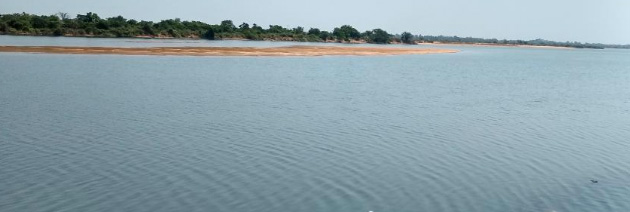Bhubaneswar: Number of polluted river stretches has come down to 7 from 19 in the year 2018, and water quality in these 7 stretches has also improved substantially.
Latest Report of State Pollution Control Board reveals that the River water quality improvement is attributable to strict monitoring of ETPs in Industries, commissioning of STPs and SeTPs in ULBs, community toilets and ODF.
Thanks to the overdrive of SPCB Member Secretary Dr.K Murugesan in this regard, the Regional Offices of the Board are hyperactive in monitoring the Water Quality.
Dr.Murugesan is regularly monitoring the process and Regional Officers of the SPCB are actively participating in the efforts to keep river stretches clean.
Water quality in respect of 36 parameters at 129 stations in 11 major river systems of the State i.e., Mahanadi, Brahmani, Baitarani, Rushikulya, Subernarekha, Budhabalanga, Kolab, Bansadhara, Nagabali, Indravati and Bahuda are being monitored and analyzed by the Board on a regular basis.
Besides, water quality of some religious ponds such as Bindusagar at Bhubaneswar, Narendra, Markanda, Parbati Sagar, Indradyumna, Swetaganga of Puri, one pond in Jeypore, one in Angul , water quality of Chilika, Anshupa and Tampara lakes, coastal water quality at Puri, Gopalpur and Paradeep, water quality of Taladanda canal and Puri canal are also being monitored.
At present coastal water over a stretch of about 80 Kilometers from Dhamra to Paradeep is being monitored at 73 locations.
In addition to the above, Bio-monitoring at 25 stations of 08 major rivers i.e., Mahanadi, Brahmani, Rushikulya, Subernarekha, Budhabalanga, Kerandi, Bansadhara and Nagabali and ground water quality of 30 districts at 91 locations are being monitored and analyzed for assessing the biological health of these river systems and ground water quality of these towns.
As a significant step in this direction, OSPCB has been implementing National Clean Air Program (NCAP) in seven pollution prone cities/industrial areas of the State namely Angul, Balasore, Bhubaneswar, Cuttack, Kalinga Nagar, Rourkela and Talcher. The Mission is to bring down the level of particulate matter in the air by 20-30 Percent as compared to 2017 level in a time bound manner. Odisha as a leading State in ‘Climate Change Action Plan’
Since Angul-Talcher and lb Valley-Jharsuguda are two areas which witness very high ambient temperature, the Board has instituted Heat Island studies for both the areas separately in order to study the cause of high temperature and to design remedial measures. Both these studies have been completed.
The Board has conducted Hotspot studies of 7 non-attainment cities. The source approximation studies of these areas are undertaken. The carry capacity studies of Rourkela area have been completed. Under the MISSION life program Board is creating awareness for life style changes for better environment.


